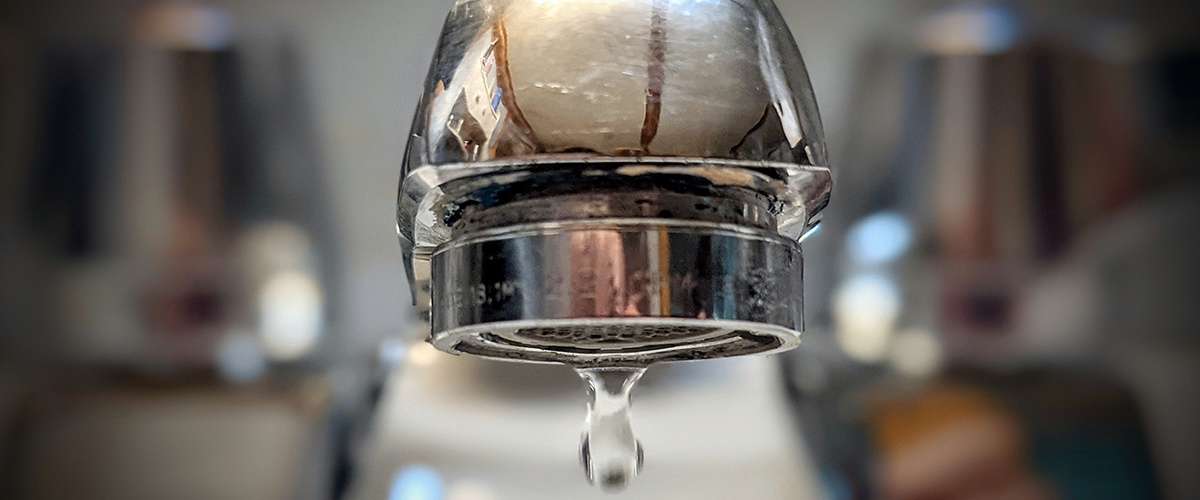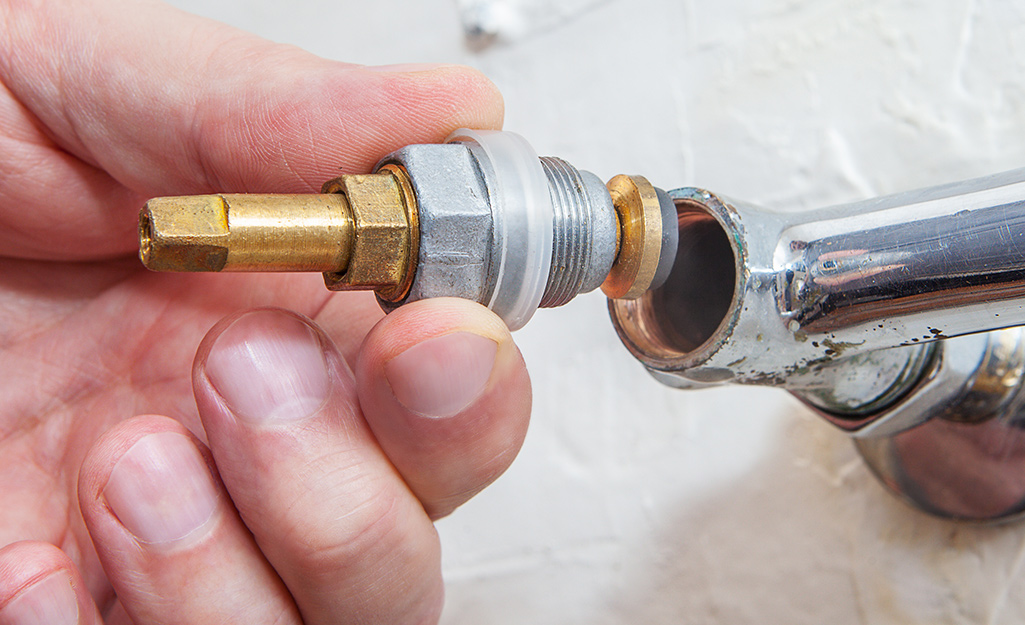Why It's Crucial to Rectify a Dripping Faucet
Why It's Crucial to Rectify a Dripping Faucet
Blog Article
We've discovered this article relating to Why It's Important to Fix Leaky Faucets down the page on the net and concluded it made perfect sense to write about it with you here.

Leaking taps might look like a minor inconvenience, but their impact goes beyond simply the inconvenience of the sound. From drainage to sustaining unnecessary financial prices and health and wellness threats, overlooking a leaking tap can cause various consequences. In this write-up, we'll delve into why it's important to address this common home problem promptly and properly.
Wastage of Water
Environmental Impact
Leaking faucets contribute dramatically to water wastage. According to the Epa (EPA), a single tap leaking at one drip per second can throw away greater than 3,000 gallons of water per year. This not just stress water resources yet additionally affects environments and wild animals based on them.
Financial Expenses
Increased Water Costs
Past the environmental influence, leaking taps can blow up water expenses significantly. The collected wastefulness gradually translates right into higher utility expenses, which might have been prevented with timely repair services.
Prospective Building Damages
Furthermore, extended dripping can lead to damage to fixtures and surfaces surrounding the tap. Water build-up can cause staining, deterioration, and even structural problems if left ignored, causing additional repair prices.
Health and wellness Worries
Mold And Mildew and Mildew Development
The continuous visibility of dampness from a trickling faucet develops an excellent atmosphere for mold and mold growth. These fungis not just endanger interior air quality however also pose health risks, specifically for individuals with respiratory system problems or allergic reactions.
Waterborne Illness
Stagnant water in leaking taps can become a breeding ground for germs and various other pathogens, raising the danger of waterborne illness. Impurities such as Legionella microorganisms thrive in stagnant water, potentially bring about serious ailments when consumed or inhaled.
DIY vs. Professional Fixing
Advantages and disadvantages of Do It Yourself Repair Service
While some may try to take care of a leaking tap themselves, do it yourself repair work come with their very own collection of challenges. Without appropriate understanding and tools, do it yourself attempts can intensify the issue or bring about insufficient repair work, lengthening the trouble.
Benefits of Hiring a Specialist Plumber
Working with an expert plumber makes certain that the underlying root cause of the leaking tap is resolved efficiently. Plumbing technicians have the experience and tools to diagnose and fix faucet problems successfully, saving time and decreasing the risk of additional damages.
Step-by-Step Guide to Repairing a Dripping Faucet
Devices Required
Prior to attempting to deal with a dripping tap, collect the needed tools, including a flexible wrench, screwdrivers, replacement components (such as washing machines or cartridges), and plumber's tape.
Typical Tap Issues and Their Solutions
Identify the sort of tap and the details concern creating the drip. Typical issues consist of damaged washing machines, rusty shutoff seats, or damaged O-rings. Describe manufacturer instructions or on the internet tutorials for step-by-step assistance on fixings.
Preventive Measures
Normal Maintenance Tips
To prevent dripping taps, perform regular upkeep such as cleaning aerators, examining for leaks, and replacing worn-out components quickly. In addition, consider installing water-saving tools or updating to much more efficient fixtures.
Value of Prompt Services
Addressing trickling faucets as soon as they're observed prevents additional water wastefulness and possible damages, ultimately saving both water and cash in the future.
Impact on Building Worth
Perception of Well-Maintained Home
Preserving a property in good condition, including dealing with upkeep concerns like trickling faucets, enhances its perceived value and charm among potential purchasers or occupants.
Influence on Resale Worth
Residences with well-kept plumbing fixtures, including faucets, command greater resale worths in the property market. Addressing trickling taps can add to a favorable impact throughout residential property inspections and negotiations.
Ecological Responsibility
Individual Payment to Preservation
Taking duty for fixing trickling taps aligns with more comprehensive initiatives towards water conservation and ecological sustainability. Every individual's actions jointly make a significant impact on preserving priceless resources.
Lasting Living Practices
By prioritizing timely repair services and adopting water-saving practices, individuals add to sustainable living techniques that profit both existing and future generations.
Conclusion
Addressing a leaking tap exceeds simple benefit; it's a vital action towards saving water, reducing economic costs, and securing health and residential or commercial property. Whether with DIY repairs or specialist aid, acting to repair dripping taps is a small yet impactful method to advertise accountable stewardship of resources and add to a healthier, a lot more sustainable future.
How to Fix a Leaky Faucet: Step-by-Step Repair Guide
A leaky faucet may seem like a simple annoyance, but if it's not fixed promptly, that leak could cost hundreds to potentially thousands. From water damage to mold, mildew, and high water bills, even a tiny leak can be catastrophic if left unattended. Damage like this can even affect the overall value of your home, so it's important to take the right approach for leaky faucet repair. You may need the help of a plumber in some cases, but we've got a few tips you can try on how to fix a leaky faucet before calling the pros.
Four Faucet Types
When you're learning how to fix a leaky faucet, the first step is knowing what kind of faucet you're working with! There are four common types.
Cartridge Faucets
Cartridge faucets come in one- or two-handled varieties. In one-handled cartridge faucets, hot and cold water combines in a single cartridge. In the two-handled versions, hot and cold water are controlled separately and mixed in the faucet.
Ball Faucets
Ball faucets have a single lever you push up and down to adjust the pressure and rotate to change the temperature. A slotted metal ball controls the amount of water allowed into the spout.
Compression Washer Faucets
They're the oldest type of faucet, but they're still used in many homes — especially older ones. Compression faucets have two separate handles that, when turned, raise or lower the washer that seals a water valve. This valve stops water from flowing through the faucet when it is turned off.
Disc Faucets
Disc faucets rarely need to be repaired due to their maintenance-free design. The water flow is controlled by two discs — the upper one raises and lowers against a fixed lower disc, creating a watertight seal. If your disc faucet starts leaking, you may need to replace the seals or clean residue buildup from the inlets.
Fixing a Leaky Faucet
Step 1: Turn Off the Water
Whether you're learning how to fix a leaky bathtub faucet or how to fix a leaky kitchen faucet, always turn off the water supply to your working area when you're fixing a leak. The last thing you want is a flood added to your list of things to fix.
Look for the shutoff valves below your sink or around the tub and turn them clockwise to stop the water flow. If your faucet doesn't have shutoff valves, you may need to turn off the water for the whole house. Check to make sure it's off by turning the faucet on. If nothing comes out, you're ready to start the repair.
Step 2: Take Apart the Faucet
How you disassemble your faucet depends on the type of fixture you have. You can use a flathead screwdriver to remove the caps on top of the handle or handles for cartridge and compression faucets. Inside, you should see handle screws. Unscrew these with a screwdriver to remove the handle.
Disc- and ball-style faucets will typically have an inlet screw near the handle, and removing that will reveal the interior of the faucet.
Detach the Valve Stem
For cartridge- and compression-style faucets, you'll see the inner valve stem or cartridge once you remove the faucet handles. If you have a compression faucet, unscrew the brass valve stem. If you have a cartridge faucet, pull out the cartridge. If your cartridge has been in place for a while, it may require some tools or extra force to remove it due to mineral deposits.
Examine and Replace Parts
Once you've removed the parts, check them out to confirm what needs to be replaced. You may see corroded rubber washers, O-rings, stems, or cartridges. On a ball-style faucet, check the seats and springs for damage.
If you need to repair a leaky disc faucet, check the inlet and seals on the lower disc.
Once you determine what parts must be replaced, visit your local hardware store. Bring the damaged parts with you to ensure you can purchase the correct components to replace them.
Clean Valves and Faucet Cavity
If you've removed a stem or cartridge, you may notice mineral buildup in the faucet's threads. Use white vinegar to clean the valve seat by soaking it for a few minutes, then scrub it away with a soft toothbrush and rinse with warm water. You can also clean the interior of the faucet in the same way.
Reassemble the Faucet
Once your faucet is cleaned and the required parts have been replaced, it's time to reassemble it. Put the pieces back together and slowly turn the water supply back on. Doing this slowly is crucial because too much initial water pressure can damage the new hardware you've just installed.
https://homewarranty.firstam.com/blog/how-to-fix-leaky-faucet

As a keen person who reads about Leaky Faucets: Why They Happen & What to Do About Them, I thought sharing that chunk was worthwhile. I beg you set aside a second to promote this blog if you liked it. I appreciate your readership.
Report this page